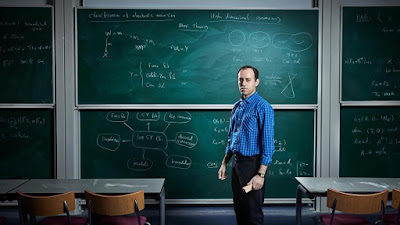 |
| Caucher Birkar, 41, at Cambridge University Photo: Jude Edginton |
Nineteen years ago, the mathematics department at the University of Nottingham received an email from an asylum seeker who wanted to talk to someone about algebraic geometry.
They replied and invited him in. So it was that, shortly afterwards, Caucher Birkar, the 21-year-old son of a Kurdish peasant family, stood in front of Ivan Fesenko, a professor at Nottingham, and began speaking in broken English. That was when his life changed.
The young Caucher Birkar did not usually roam the campus of Nottingham University.
Sometimes, when he wasn’t meeting maths professors, he would present his government-issued food vouchers at the local supermarket and the cashiers wouldn’t know what they were. They would hold them up to the light, or call a manager for assistance.
This was one of the humiliating parts of being an asylum seeker.
Most of the time, though, his life at that time was just boring. For a year, Birkar, until his eventual acceptance into the country, had no control over his life. He could not work; he could not choose where to live. But there was one thing he could do, one thing that is untroubled by borders, legality or even language: he could do mathematics...
Perhaps it is better to begin at the beginning, with algebraic geometry. In mathematics, equations are sometimes also shapes. So x+y=2 is a straight line, while x2+y2=1 is a circle. Algebraic geometry is about studying all the shapes that can also be described by equations. These include three-dimensional shapes such as spheres, multidimensional shapes that cannot be visualised at all, and less regular shapes that might, say, have holes or handles.
If that makes sense, congratulations: you now have a very hazy understanding of algebraic geometry. This is the field that Birkar works in...
Einstein, the most famous refugee scientist of all, once remarked, “If relativity is proved right the Germans will call me a German, the Swiss will call me a Swiss citizen, and the French will call me a great scientist.” The same, Birkar has found, is the case for him.
Read more...
Source: The Times










